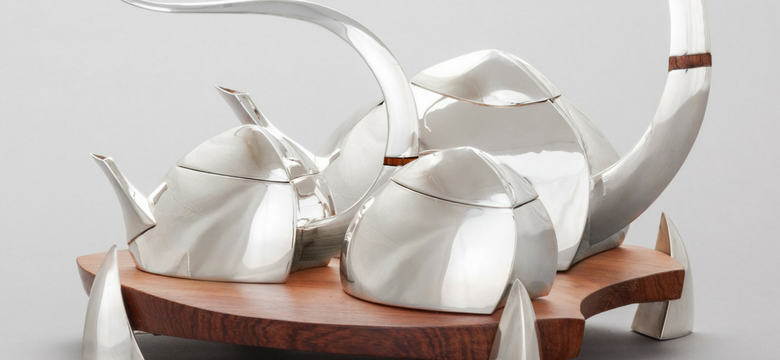
It’s easy to like silver. In its pure form, silver is a stunning element, which goes a long way toward creating beautiful works of art when in the hands of an accomplished silversmith.
But there is a significant difference between liking silver and making it a livelihood as a true expert on silver artwork. Heritage Auctions Silver & Decorative Arts Director Karen Rigdon is exactly that, and shared how and why she got into the business, advice for aspiring silver collectors and which lots in Heritage’s April 25 Silver & Vertu Auction have captured her attention.
Heritage Auctions: How did you get started in the auction business?
Karen Rigdon: I always have connected with beautiful objects, finely designed furniture and craftsmanship that speaks for itself. Objects drew me to museums and collectors early in life, and an internship in the Furniture & Woodworking Department at the Victoria & Albert Museum in London cemented my interest and drove me to graduate school. I started in museums, and life brought me to Heritage Auctions, where I continue to connect with beautiful objects and the people who collect them. This shared passion creates friendships and opens doors.
Heritage Auctions: What advice would you give to aspiring silver collectors?
Rigdon: What draws you to silver? Is it simply the material or is it a period, a form, a technique? Focus on that, and buy the best you can afford.
Heritage Auctions: Where should they start?
Rigdon: Start with what thrills your heart.
Heritage Auctions: Who are some of your favorite silversmiths?
Rigdon: That is an interesting question, as I am typically asked which is my favorite period. I am very interested in late 19th– and early 20th-century American silver from the Aesthetic Movement through the Arts & Crafts Movement. However, when it comes to naming silversmiths, I also include designers and extend well into the 20th century. Two of my favorite lots show the range:
The first is a four-piece silver service by the Wienerwerstate designer Josef Hoffman. The flat planes, play between forms and reflections are simple, beautifully refined. The service is a complete work of art, or Gesamtkunstwerk.

A more recent work is the whimsical creation of Michael and Maureen Banner. Their four-piece tea service, Tales is inspired by Jacques Offenbach’s The Tales of Hoffmann. Their goal was to create a “very horizontal forward-moving piece. These angular, curved, solid flat-bottomed vessels with whipped tails are poised to leap from their tray. Their goal was met!
Heritage Auctions: If you could bid on three works in the upcoming auction, which lots would you pick and why?
Rigdon: I would love to own the Gorham Narragansett set. The degree of detail is exceptional – you see something new with each viewing. I do not believe I would ever tire of this set.
I have long been interested in the incredible effect of the discovery of the Comstock Lode, which ushered in an era of unmatched creativity among American silversmiths during the last decades of the 19th century. It is difficult to clearly identify works made from silver mined from the Comstock Lode, and interestingly, this tea pot is inscribed “Gould & Curry Silver Mine,” which was the second-richest mine in the Comstock Lode. It is a great find!

I have been enamored by our two bloodstone lots among the objects of vertu. These two green stone vessels with red flecking speak to taste and a way of life in the 18th century. The form of the lobed bottle and bombé snuff box are elaborate beyond need. Both were created as personal items to be tucked in a pocket or bag, and thus carry a personal history that is unknown to us, but conjures tales of intimate affairs.
 Check out more Silver & Vertu items in upcoming and past auctions here.
Check out more Silver & Vertu items in upcoming and past auctions here.
Written by: Karen Rigdon, Director of Silver & Decorative Arts


Dear Karen Rigdon,
The piece of silver you mention with the inscription “Gould & Currey Silver Mine” is a bit mysterious.
There was a mine of this name in Virginia City, Nevada, but I don’t think they ever manufactured anything. They just extracted and treated ore. It was one of many mines exploiting the Comstock Lode. Their only product was silver ingots.
My guess is that the inscription was a bit of a marketing ploy by who ever sold it. It could have been added by anyone, and I very much doubt if there was any way for silversmiths to know which mine produced it.
I would love to be proven wrong!
Yours truly,
Roger Paige.